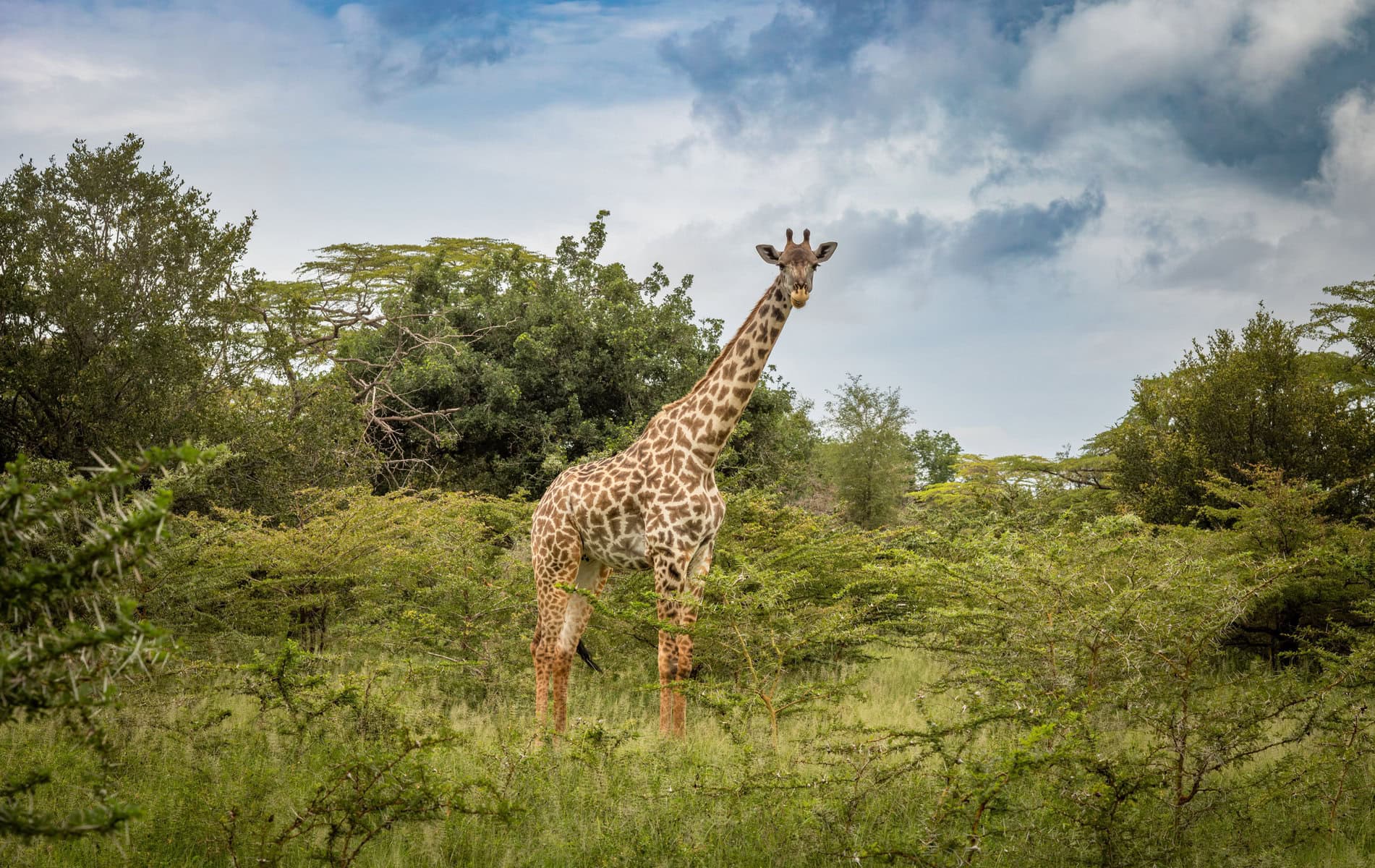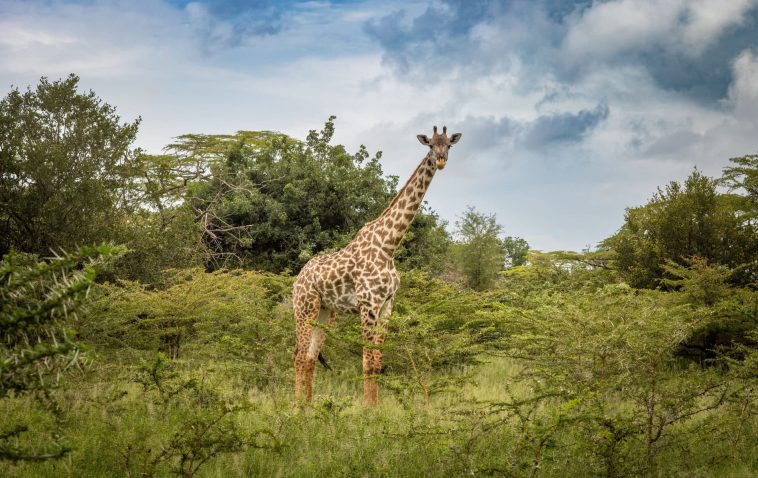
Planning Your Safari Adventure This October
As India’s monsoon clouds give way to clear, crisp skies come October, nature unveils a breathtaking transformation. National parks across the region swing open their gates, inviting wildlife enthusiasts and amateur explorers alike to experience an entirely renewed landscape. This season offers more than just a change in weather—it presents a delightful opportunity to watch nature’s wonders and witness the subtle twists and turns of the animal kingdom as they emerge from their monsoon hideaways.
Why October Is the Perfect Month for a Safari
After months of rain sweeping across India, the forests have had time to recover and rejuvenate. In October, the air is crisp and the mornings carry a mist that adds an air of mystery to every expedition. With improved visibility and a revival in the lush greenery, seeing elusive creatures like tigers, leopards, and rare birds becomes a reality. The season is all about making your way through nature’s exquisite canvas—one that has been refined by the gentle, yet persistent, touch of nature.
Experience the Splendor of Post-Monsoon Landscapes
Post-monsoon India is a spectacular blend of renewed flora and fauna. The weather is no longer overwhelming, which lets nature enthusiasts enjoy long drives through vast expanses of grasslands and deep forests without the nerve-racking challenges posed by heavy rains. With sunrises and sunsets that paint the entire horizon with vibrant hues, the post-monsoon period turns each safari into a storybook experience where every sighting is a moment to treasure.
Enhancing Your Safari with Expert Travel Insights
Planning a safari, especially during the transitional months like October, can feel a bit tangled at times. From booking permits early to choosing the right vehicle for your journey, getting into the nitty-gritty of safari planning requires attention to detail. In this editorial, we take a closer look at some of India’s most iconic national parks, their unique offerings, and practical tips to ensure that your adventure is as smooth as it is exciting.
Detailed Look at the Iconic National Parks Reopening in October
While many national parks close their doors during the monsoon season for safety, a select few make a timely comeback in October. Here, we dive into detailed accounts of eight popular parks, each with its own charm and attractions. Whether you are enchanted by the sound of nature or eager for wildlife photography, these parks offer something for every kind of traveler.
Jim Corbett National Park, Uttarakhand
Renowned as India’s first national park and the cradle of Project Tiger, Jim Corbett remains one of the most sought-after safari destinations. With a mix of grasslands and dense Sal forests, the terrain presents a myriad of opportunities to spot tigers, elephants, gharials, and over 600 species of birds. Although certain zones such as Dhela and Garjiya remain accessible all year round, popular areas including Bijrani, Dhikala, Durgadevi, Sonanadi, and Pakhro only reopen mid-October.
Key Attractions at Jim Corbett
- Opportunities to see a diverse array of animals across varied landscapes
- Thrilling drives through both open grasslands and thick woodlands
- Birdwatching sessions that offer close encounters with over 600 bird species
For any visitor, the park provides that essential blend of adventure and natural beauty. Recognizing the subtle parts of the landscape and adapting to its open expanses can make for an experience many will remember fondly.
Ranthambore National Park, Rajasthan
Ranthambore is arguably one of India’s most dramatic safari settings. Its wide landscapes, punctuated by serene lakes and the ancient ruins of Ranthambore Fort, create a setting aptly suited for tiger sightings that feel almost cinematic. The open spaces enhance your chances of witnessing not just tigers, but leopards, marsh crocodiles, hyenas, and even the elusive sloth bears.
Highlights for Wildlife Enthusiasts
- Immersive exploration of lush landscapes juxtaposed with historical ruins
- Daily safari adventures providing multiple opportunities for animal sightings
- Excellent connectivity from major cities such as Jaipur and Delhi, making it super important for quick getaways
With its dramatic backdrop and rich wildlife diversity, Ranthambore provides the perfect setting to figure a path through the unpredictable yet exciting wilderness of Rajasthan.
Sariska Tiger Reserve, Rajasthan
Located amidst the rugged Aravalli Hills, Sariska offers a convenient escape and is an ideal destination for a brief weekend getaway. Its tigers roam relatively freely, with additional sightings of leopards, striped hyenas, and sambar deer enhancing the visitor’s experience. Moreover, the historical temples and ruins strewn across the reserve add a cultural flavor, seamlessly merging nature and heritage.
Features of Sariska Tiger Reserve
- Proximity to Delhi, making it a practical choice for short, intensive trips
- A blend of wildlife and ancient architecture that enriches the overall travel experience
- Dynamic terrain that demands you to take a closer look at every corner for hidden surprises
For those who relish finding their way through both nature and history, Sariska offers a balanced cocktail of action, tradition, and adventure.
Bandhavgarh National Park, Madhya Pradesh
Bandhavgarh is well-known for its high density of tigers and serves as an excellent site for both beginners and seasoned wildlife enthusiasts. Visitors often applaud the park’s regular tiger sightings, sometimes even spotting more than one in a single safari journey. In addition to its famed big cats, Bandhavgarh is home to leopards, jackals, and a wide array of over 250 bird species. Intriguingly, the remnants of ancient fort ruins scattered within the park add yet another layer of depth to your experience.
What to Expect at Bandhavgarh
- A concentrated wildlife experience especially known for frequent tiger sightings
- An engaging mix of fauna including leopards and various bird species
- A historical touch with fort ruins that enhance the story of each safari drive
Bandhavgarh stands out as a destination where every twist and turn of your journey has something breathtaking waiting around the corner.
Kanha National Park, Madhya Pradesh
Inspired by Rudyard Kipling’s classic tales, Kanha is a sanctuary where nature writes its own story. After the rains, the blend of vast meadows, thick Sal forests, and running streams creates a backdrop that is both evocative and vividly picturesque. Kanha is not just about the tigers—it also hosts the last refuge of the barasingha, or swamp deer, once on the brink of extinction. As migratory birds return and the cooler months set in, birdwatchers find themselves spoiled for choice with a diversity of species.
Unique Aspects of Kanha National Park
- The park is a living canvas influenced by the rich heritage of wildlife literature
- A balanced ecosystem that supports both large predators like tigers and delicate species such as the barasingha
- Exceptional birdwatching opportunities in a mesmerizing post-monsoon environment
Kanha is a must-visit for those who are passionate about diving into the rich tapestry of nature while appreciating its hidden complexities.
Pench National Park, Madhya Pradesh and Maharashtra
Pench uniquely straddles two states, offering expansive landscapes that are believed to have inspired Rudyard Kipling’s literary masterpiece, The Jungle Book. The park is popular for sightings of not only tigers and leopards but also wild dogs (dholes), which add a wild and unpredictable element to its biodiversity. Quiet rivers and teak forests set a serene stage, making each safari feel like a step into a living fable.
Core Attractions at Pench
- Cultural and literary resonance with classic wildlife stories
- A peaceful river ambience juxtaposed with bursts of adrenaline during wildlife chases
- Diverse animal sightings which accentuate the park’s narrative as a storybook safari
The park’s simple, yet legendary, appeal lies in its ability to merge literature with the wild, allowing visitors to float between moments of intense wildlife drama and tranquil reflections amidst nature.
Tadoba Andhari Tiger Reserve, Maharashtra
Tadoba is Maharashtra’s oldest and largest tiger reserve, making it a centrepiece for photographers and wildlife enthusiasts alike. Its open landscapes, often punctuated with water bodies, create ideal conditions for observing big cat behavior in naturally lit environments. Besides tigers, the reserve boasts sightings of sloth bears, wild dogs, and smaller jungle cats, each adding their own unique flair to the journey. The mix of dense forest patches and bamboo thickets ensures that every safari is visually striking and a treat for the camera lens.
Highlights and Tips for Tadoba
- Open landscapes that result in excellent wildlife photography opportunities
- Varied habitats that support a wide array of animal species
- A blend of scenic water bodies and dense forests which create chances for both dynamic animal chases and quiet reflection moments
With its diverse wildlife and photogenic vistas, Tadoba is a destination that promises not just an adrenaline rush, but also a soft-spoken narrative of nature’s resilience.
Panna National Park, Madhya Pradesh
Panna stands as a testament to India’s impressive conservation efforts. Known for its successful tiger reintroduction programme, the park continues to inspire both wildlife lovers and conservationists. Along the scenic Ken River, safaris here are not only about tiger sightings but also bring you face to face with the critically endangered gharial on riverbanks. The interplay of dramatic gorges and cascading waterfalls adds an idyllic charm, making it a destination that captures the delicate balance between wild beauty and committed conservation.
Noteworthy Aspects of Panna
- Innovative conservation efforts that spotlight the park’s tiger reintroduction success
- A dramatic landscape where the Ken River flows through gorges and waterfalls
- Unique opportunities to see critically endangered species like the gharial
Panna is the perfect blend of a wildlife sanctuary and a scenic marvel, where each safari presents both breathtaking landscapes and the subtle challenges of finding your way through its vibrant ecosystem.
Gathering Essential Safari Tips and Tricks for a Smooth Journey
While the promise of wildlife, vast landscapes, and unforgettable memories beckon, planning your safari requires careful thought. Whether you’re a seasoned explorer or a first-time visitor, managing your way through the travel logistics is as important as the trip itself. Here are several practical tips to help you prepare for your post-monsoon safari adventure.
Booking Permits and Early Reservations
One of the first steps in ensuring a hassle-free journey is booking the necessary permits ahead of time. Many national parks limit the number of vehicles per zone each day, making early reservations essential. It is a good idea to book your spot weeks in advance to avoid the nerve-wracking rush as the park reopens.
Key Points to Consider
- Contact the park authorities or visit official websites well before your planned trip.
- Keep updated with any changes or local guidelines that might affect your travel dates.
- Plan for flexible timings, as unpredictable local weather can sometimes interfere with scheduled safaris.
Choosing the Right Safari Vehicle
The type of vehicle you opt for can greatly affect your experience in the wild. Jeep safaris, which are typically 6-seaters, offer flexibility and enhanced visibility, allowing you to take in the surroundings at your own pace. On the other hand, canter safaris, though more budget-friendly, might not deliver the same amount of personal space. Deciding what fits your preference and budget will help you enjoy the journey without feeling overwhelmed.
Comparing Safari Vehicles
| Type | Capacity | Visibility | Budget Consideration |
|---|---|---|---|
| Jeep Safari | 6-seater | High | Higher cost |
| Canter Safari | 20-seater | Moderate | More budget-friendly |
By taking the time to decide which option suits your travel style, you ensure that the experience is enjoyable from the moment you set foot in the park.
Packing Essentials for Your Safari
Preparing for a safari entails more than just booking your tickets. Packing the right gear is super important to enhance your trip. The post-monsoon weather can be unpredictable, with cool mornings and warm afternoons. To make the most of your adventure, pack these essentials:
- Binoculars for spotting wildlife from a distance
- A light jacket for the cool morning hours
- Neutral-colored clothing to blend in with the natural environment
- Comfortable footwear suitable for uneven terrain
- A good quality camera to capture moments that tell your story
Respecting Wildlife and the Environment
One of the key aspects of ensuring that our natural habitats remain pristine is respecting the wildlife and the rules set by the park authorities. It might sometimes seem tricky to figure a path through the dos and don’ts, but a little consideration goes a long way. Maintaining silence, avoiding littering, and not urging your guide too much to rush can provide these gentle creatures the space they need, reinforcing a mutually respectful bond between visitors and nature.
How to Reach the Majestic National Parks
Before venturing into the wild, it’s essential to figure out the best routes and transportation methods to reach these renowned national parks. Here’s a concise guide on how to get to some of the key parks reopening in October:
Transportation Options and Nearest Transit Points
| National Park | Closest Airport | Nearest Railway Station |
|---|---|---|
| Jim Corbett National Park | Pantnagar (80 km) | Ramnagar |
| Ranthambore National Park | Jaipur (180 km) | Sawai Madhopur |
| Sariska Tiger Reserve | Jaipur (110 km) | Alwar |
| Bandhavgarh National Park | Jabalpur (160 km) / Khajuraho (250 km) | Umaria |
| Kanha National Park | Jabalpur (160 km) | Gondia or Jabalpur |
| Pench National Park | Nagpur (90 km) / Jabalpur (200 km) | Local Stations |
| Tadoba Andhari Tiger Reserve | Nagpur (140 km) | Chandrapur |
| Panna National Park | Khajuraho (25 km) | Khajuraho |
These transit points simplify planning your route to the wild. Figures might change slightly depending on local conditions, so it’s always a good idea to verify updated travel details before setting out for your adventure.
Decoding the Best Time for Safari Experiences
While October provides a thriving environment for a safari, each time of the year brings its own set of opportunities and slight differences in experience. Understanding these subtleties can help you choose when to plan your journey based on what you wish to see and do.
Sunrise Safaris: Early Morning Delights
Sunrise safaris play a crucial role in the overall safari experience. Cooler weather and the soft light of dawn not only enhance the visibility of wildlife but also set a dramatic backdrop for photography. Animals are often active at this time, returning from their nocturnal hunts, making early expeditions particularly rewarding.
Sunset Safaris: A Golden Hour Amidst the Wilderness
As the sun begins its descent, the lighting transforms the entire park into a scene of golden brilliance. This period is ideal for those who dig into nature’s aesthetic nuances, capturing moments where herbivores graze peacefully and the landscape itself seems to glow. Although the temperatures may still be mild, the soft light adds an enchanting touch to every snapshot.
Birdwatching Expeditions: From Post-Monsoon to Migratory Patterns
October through December is the prime window for birdwatching. As migratory birds arrive and establish temporary habitats, enthusiasts can enjoy a close-up view of various species. With crisp air enhancing the clarity and color of each feather, this period is special for both novice birdwatchers and seasoned ornithologists.
Summer Safari Insights: Heat and Waterhole Dynamics
While summer safaris between March to May present their own unique charm, they come with challenges. The increased heat forces animals to congregate around waterholes, which can be advantageous for spotting big cats. However, the sun’s intense glare and the possibility of dehydration require careful planning, especially when attempting to appreciate the wild up close.
Balancing Culture and Conservation on Safari Journeys
Beyond the clear skies and explosive wildlife moments, these parks are a testament to India’s legendary commitment to conservation and history. Many parks like Sariska and Bandhavgarh not only host remarkable wildlife but are steeped in cultural heritage through ancient ruins and temples.
Integrating Historical and Natural Landscapes
While the primary draw remains the thrill of spotting an elusive tiger or that rare bird in the distance, the presence of ancient ruins or cultural artefacts adds depth to the overall experience. Instead of viewing the parks as a mere collection of tangled issues to be resolved, they serve as living museums where both nature and history are carefully preserved for future generations. Each drive through these parks becomes a journey—not just for wildlife sightings, but for understanding the symbiotic relationship between nature and human heritage.
Conservation Success Stories that Inspire Travelers
Parks like Panna play a central role in highlighting innovative conservation efforts where wildlife, once on the brink of disappearing, now thrives. Such inspiring success stories educate visitors and encourage a respectful, thoughtful approach to exploring nature. They remind us that every visit supports efforts to preserve delicate ecosystems and secure their future for countless species, including our own.
Personal Reflections on the Approaching Safari Season
There’s an undeniable magic in knowing that, as you plan your next getaway, the earth around you is gearing up for a vibrant display of life. The post-monsoon season brings with it a sense of renewal—not just in the physical environment but in our collective spirit as travelers and nature enthusiasts. The anticipation of witnessing a tiger’s stealth, the unexpected flutter of a rare bird’s wings, or the quiet thrill of a sunset drive encapsulates not only an adventure but also an enduring connection to nature’s periodic revelations.
Cultivating Patience and Curiosity
Every safari is layered with moments that require you to either dig into or step back and simply enjoy nature’s quiet drama. It is important to remember that wildlife rarely follows a predictable schedule. Sometimes, the most astonishing sights occur during the calm, unassuming moments, when the forest breathes a little slower, and the morning air carries a delicate chill. The subtle details of each scene—the soft rustle of leaves, a distant roar—are as super important as the major animal sightings themselves.
Embracing the Unexpected on Safari
While it’s good to plan your journey meticulously, the art of taking the wheel and letting nature lead is equally valuable. Each national park offers its own sense of spontaneity that makes every trip unique. You might plan for a focused wildlife watch but end up with an impromptu encounter or an unexpected scenic view that perfectly sums up the essence of your journey. These twists and turns, though sometimes intimidating, are what transform a safari into an immersive, lifelong memory.
Conclusion: A Call to Embrace the Safari Spirit This October
As we look forward to October, the reopening of India’s magnificent national parks stands as a call to all those who cherish nature’s wonders and the thrill of exploration. From the historic lanes of Jim Corbett National Park to the culturally enriched paths of Sariska and the legendary trails of Ranthambore and Bandhavgarh, each destination offers a unique blend of wildlife, history, and natural artistry.
While the fine points of planning—such as booking early, selecting the right vehicle, and packing the correct gear—may seem overwhelming at first, they are simply parts of the journey. When you manage your way through these little details, you open up a world where each safari becomes an intricate novel written by nature itself.
This October, consider stepping out of your comfort zone, taking a path less trodden, and embracing the spirit of the wild. Whether your adventure is driven by a passion for wildlife photography, a longing to reconnect with nature, or simply the desire to witness India in its post-monsoon glory, the national parks are ready to welcome you into their rejuvenated ecosystems.
Planning your next expedition is as much about the journey as it is about the destination. So pack your binoculars, secure those permits, and get ready to navigate through a season where every path leads to a new discovery. After all, the wild is waiting, and October is the perfect time to let nature surprise you at every corner.
Embrace the unpredictable nature of the safari experience, and let your curiosity guide you through this season of renewal. The majestic landscapes, vibrant wildlife, and the enchanting touch of history call you to take a step forward—one that might just change your perspective about nature and its endless wonders.
Happy Safari Adventures!
Originally Post From https://www.ndtv.com/travel/which-national-parks-are-reopening-in-october-for-safari-full-list-here-9256903
Read more about this topic at
These Are the Best Times to Go on a Safari, According to …
When To Go On Your Great Migration Safari


